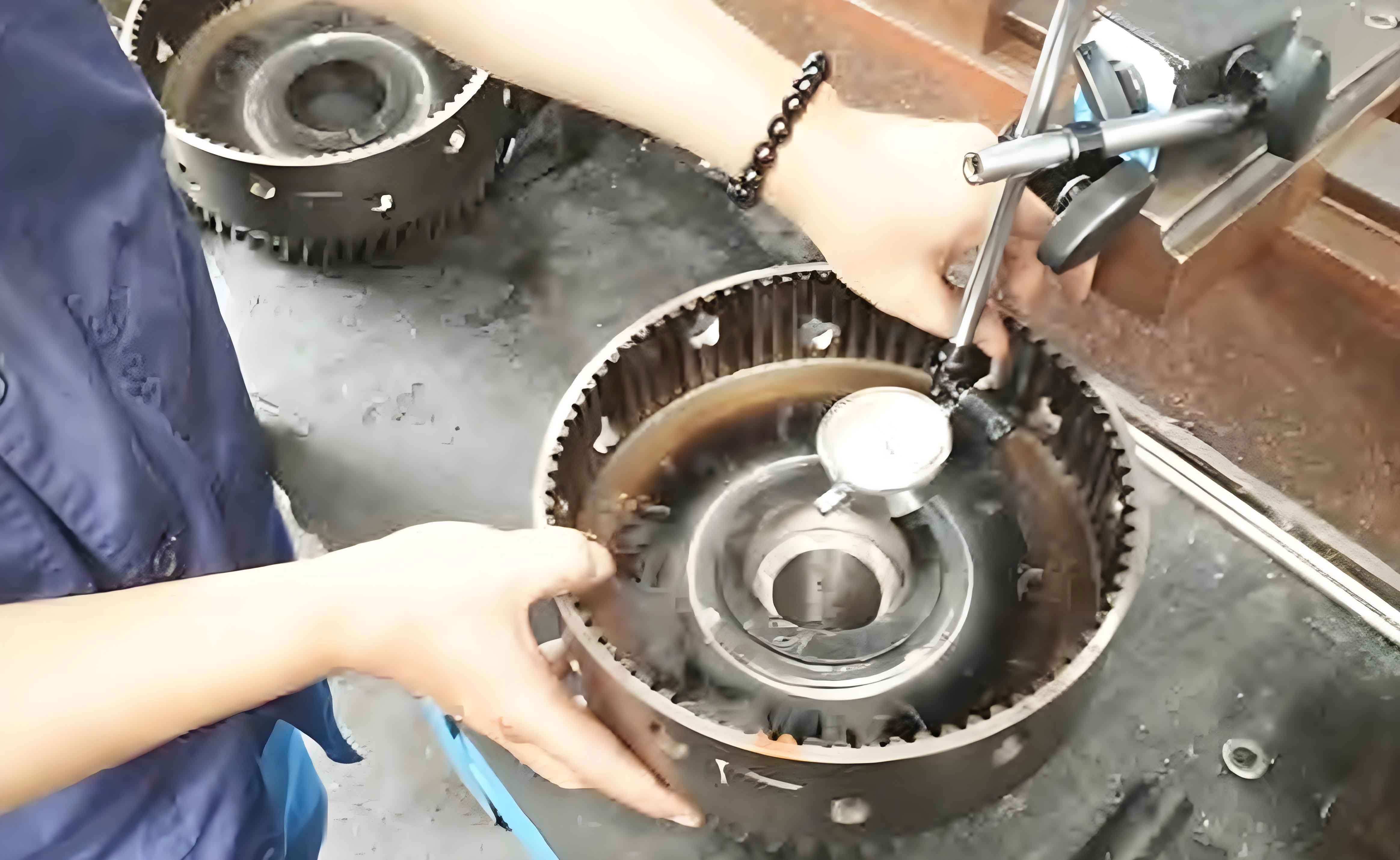1. Introduction
The clutch hub, as a critical component in tractor transmission systems, faces significant challenges in maintaining dimensional accuracy during manufacturing, especially for thin-walled designs. Welding-induced deformation and residual stresses often compromise the geometric integrity of the clutch hub, leading to performance issues such as misalignment, vibration, and reduced service life. This study focuses on optimizing the precision control of clutch hub weldments through advanced fixture design, heat treatment, and welding techniques. By addressing these challenges, the research aims to enable mass production of high-precision clutch hubs while minimizing post-weld distortions.

2. Key Challenges in Thin-Wall Clutch Hub Manufacturing
Thin-wall clutch hubs (wall thickness < 3 mm) are prone to deformation due to:
- Thermal gradients during welding.
- Residual stresses from machining and heat treatment.
- Geometric instability during assembly.
To mitigate these issues, a multi-stage precision control strategy was developed, integrating:
- Specialized Fixtures: For gear shaping, heat treatment, and assembly.
- Optimized Welding Processes: Spot welding, demagnetization, and electron beam welding (EBW).
- Rigorous Quality Metrics: Dimensional tolerances, torsional stiffness, and axial clearance.
3. Methodology
3.1 Fixture Design for Precision Control
Custom fixtures were engineered to stabilize the clutch hub at critical manufacturing stages:
| Fixture Type | Function | Key Parameters |
|---|---|---|
| Gear Shaping Fixture | Ensures concentricity during gear tooth machining | Radial tolerance: ±0.03 mm |
| Heat Treatment Fixture | Prevents warping during carburizing and quenching | Thermal uniformity: ±5°C |
| Assembly Press Fixture | Maintains alignment during press-fitting of subcomponents | Axial force: 10 t; Alignment error: <0.1 mm |
3.2 Welding Process Optimization
A hybrid welding approach was adopted to minimize deformation:
- Spot Welding: Temporary fixation of components.
- Parameters: Current = 6 kA, Pressure = 150 N/mm², Duration = 0.3 s.
- Demagnetization: Reduces residual magnetic fields post-spot welding.
- Magnetic field strength: <0.3 mT.
- Electron Beam Welding (EBW): High-precision final welding.
- Beam voltage = 60 kV, Beam current = 63 mA, Welding speed = 23 mm/s.
The heat input (QQ) during EBW was controlled using:Q=V⋅I⋅tvQ=vV⋅I⋅t
Where VV = voltage, II = current, tt = exposure time, and vv = welding speed.
4. Experimental Validation
4.1 Dimensional Accuracy
Post-weld measurements of the clutch hub showed significant improvements:
| Parameter | Before Optimization | After Optimization | Tolerance Requirement |
|---|---|---|---|
| Outer Diameter | 0.15 mm deviation | 0.05 mm deviation | ±0.08 mm |
| Wall Thickness | ±0.12 mm | ±0.03 mm | ±0.05 mm |
| Concentricity | 0.20 mm | 0.06 mm | <0.10 mm |
4.2 Mechanical Performance Testing
Critical performance metrics were evaluated:
| Test | Procedure | Result | Requirement |
|---|---|---|---|
| Torsional Stiffness | Applied torque (ττ) at 1 N·m/s; measured angular displacement (θθ). | θmax=8′θmax=8′ | θ<10′θ<10′ |
| Sliding Force | Axial force applied at 10 mm/s | 55 N | 30–80 N |
| Axial Clearance | Measured displacement under 100 N load | 0.12 mm | <0.15 mm |
5. Discussion
5.1 Role of Fixtures in Precision Enhancement
The gear shaping fixture reduced radial runout by 70%, while the heat treatment fixture minimized thermal distortion by maintaining uniform cooling rates. The assembly press fixture ensured subcomponent alignment within ±0.1 mm, critical for minimizing post-weld mismatch.
5.2 Advantages of Hybrid Welding
- Spot Welding: Provided temporary stability without full penetration, reducing pre-weld stresses.
- EBW: Achieved a narrow heat-affected zone (HAZ) of 0.1–0.16 mm, preserving the clutch hub‘s metallurgical properties.
5.3 Economic and Production Impact
The proposed methodology reduced scrap rates from 12% to 3%, enabling cost-effective mass production of clutch hubs. Cycle time per unit decreased by 20% due to streamlined processes.
6. Conclusion
- Fixture Design: Custom fixtures for gear shaping, heat treatment, and assembly are essential for maintaining the clutch hub‘s geometric stability.
- Welding Strategy: The combination of spot welding, demagnetization, and EBW effectively controls welding deformation in thin-wall structures.
- Scalability: The methodology is applicable to other thin-wall components in automotive and aerospace industries.
